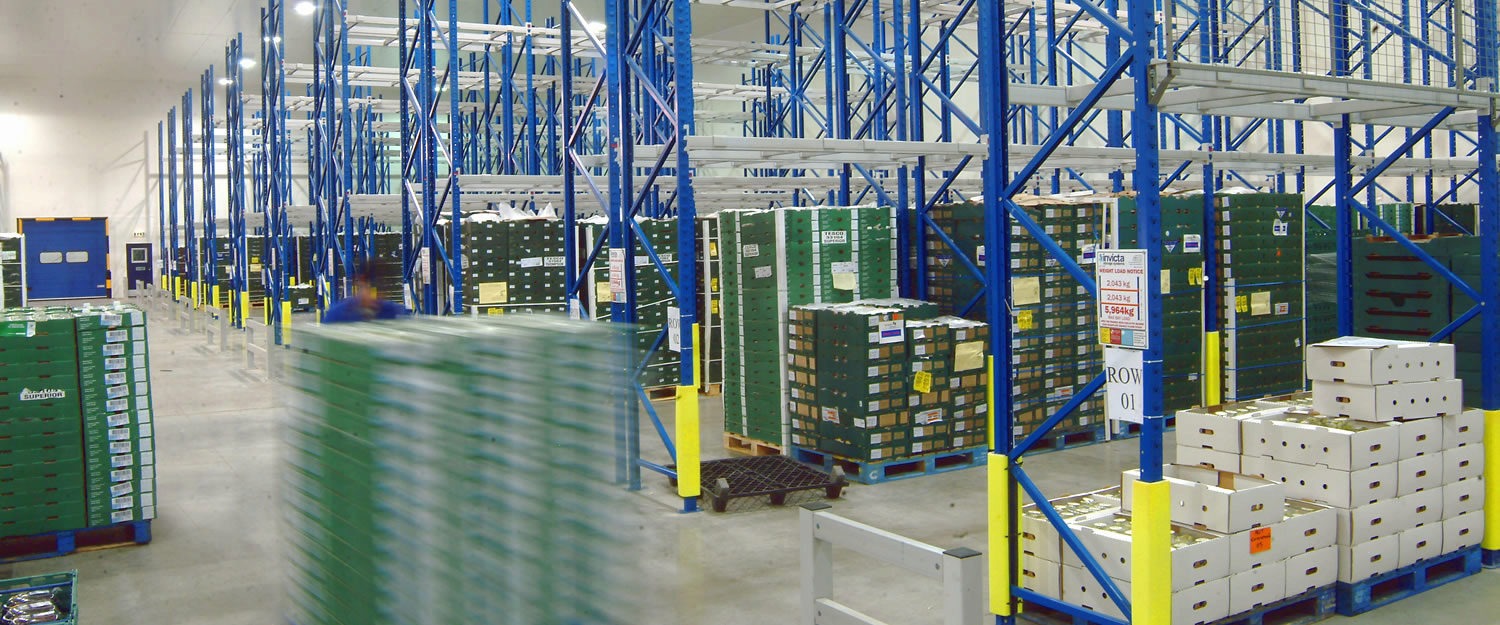For your information
You are being redirected to one of our divisional subsites which contains more detailed information on the required division. To navigate back to the main Invicta Group site, please click the link found in the footer at the bottom of the page.
Why Urban Warehousing Requires New Storage Solutions
7th January 2020
Concrete jungle
Quick Quote
Contact Mick Coyne
To get a quotation or arrange a free site survey - Call Mick Coyne on
-
 UK
UK
Current location:
Quick Quote
Contact Mick Coyne
-
 UK
UK
Current location:
The way we use warehouses hasn’t substantially changed in decades, albeit that there are many more of them. The basic tenets of the supply chain have remained much the same, with goods ferried from manufacturers to middlemen, who then send them on to retailers or customers. Yet in 2019, these dynamics are finally starting to shift, and bringing new questions with them.
The arms race begun by Amazon for one-day and even same-day delivery has necessitated a small revolution in warehouse storage – and it’s one that’s only likely to escalate. The demand for quicker last-mile delivery invariably means building warehouses closer to major population centres, and this brings with it a whole new set of challenges. Here are just a few ways in which urban warehousing is demanding entirely new storage solutions.
Going the last mile
It’s hard to be a retailer without selling your goods online in the modern age, and the competition can be cutthroat. With evidence suggesting that more people now shop online than at retail, and online spending rising exponentially each year, the online experience is becoming a central focus for businesses of all sizes. A major part of this is tied up in delivery, and how quickly and conveniently customers can receive their products.
Amazon have led the way in this regard, with their Amazon Prime subscription service offering next-day delivery on many products, and rolling out same-day delivery to a number of cities around the UK. With 77% of people polled by Royal Mail owning an Amazon Prime subscription, this logistical firepower is something that other businesses are struggling to deal with, even with the help of major third-party logistics firms.
The only viable answer appears to be to compete for warehouse space in and around cities. By storing products in warehouses local to customers, shipping can invariably be completed more quickly. This is important not just for typical consumer goods but also for chilled goods, where cold storage is even more at a premium. And before long, these warehouses could even be delivering products by air, with Amazon again making strides in the use of delivery drones.
Robot revolution
Buying and building warehouses in major cities is easier said than done, however, and the clamour for these spaces requires some changes in how warehouses are designed and used. On a basic level, these warehouses will have to maximise their efficient use of the space; it’s likely that these warehouses will become smaller, and so they will require higher density storage solutions, such as narrow aisle and multi-tier pallet racking.
The floorplan may also have to change, with a high volume of vehicles and personnel having to navigate in tighter spaces. The increasing use of technology, which is already invaluable for the efficiency that these facilities demand, will inevitably play a role here. As well as sensors to prevent vehicle collisions, fully automated vehicles and shuttles allow for tighter shelving layouts than can be navigated by a traditional forklift; this is already demonstrable with automatic storage and retrieval (AS/RS) systems, but these will likely become even more complex.
Eventually, the density of storage and capabilities of robots may eliminate the need for humans altogether. We’ve already seen a major step towards this with Ocado’s cutting-edge warehouses and distribution centres, where robots skate across the top of a cube-like grid of pallets, picking up and depositing items automatically. Ocado’s flagship warehouse was tragically destroyed by a fire, which proved difficult to fight because of these cramped confines, but this seems a step forward on an inevitable path to the future.
Efficient by design
Dense cityscapes around the world prove that the only way is up, and this is likely to apply to warehouses too. Storage skyscrapers are not entirely out of the question, and Amazon may have an eye on such ambitious projects with their Amazon Prime Air service, which aims to deliver small items at rapid speed using drones. For the majority of firms, however, multi-storey urban warehouses aren’t too far over the horizon, if they aren’t in use already.
To maximise efficiency, it’s likely that more and more of these warehouse projects will be factored into the urban planning conducted by local authorities, and melded into the fabric of the cities themselves. Multi-storey warehouses will have roads and overpasses that attach directly to the different floors of the warehouse, allowing goods to be loaded straight onto delivery vehicles without needing to be ferried to the ground floor and clogging the same roads.
With towns shrinking and cities growing, the whole supply chain may eventually need to adapt to this heavy, centralised demand. As more people consume organic goods and we become more climate conscious, for example, shelf lives will become a more active concern. This could require produce to be grown in much closer proximity to the warehouses, or even for local farmers to be integrated more closely with the supply chain, with equipment provided to refrigerate and quickly process goods.
It’s not hard to imagine food being cultivated in a city warehouse itself under climate-controlled conditions, and shipped straight to the consumer by the retailer. The rise of 3D printing could similarly see some items manufactured to order, and sent out within an hour’s notice from a central hub, or dropped off for local collection. We may not be a million miles away from one company dominating the entire supply chain, from production to distribution to sales.
—
These changes to urban warehousing inevitably bring new costs, but they also bring new opportunities. By ingraining efficient storage in the design of new buildings and utilising new technologies, businesses will learn lessons that can apply across their portfolios, which will stretch far outside the demands of urban environments. This hyper-efficient storage may not only save money in the long run, but could also lead to more environmentally conscious warehouse storage, and distribution that’s less reliant on fuel guzzling flights and haulage.
Accreditations & Affiliations







Start your project
Tell us about your project. Please complete this form. One of our sales team will come back to you with more details. If you prefer, you can drop us an email.




Share/Like this page